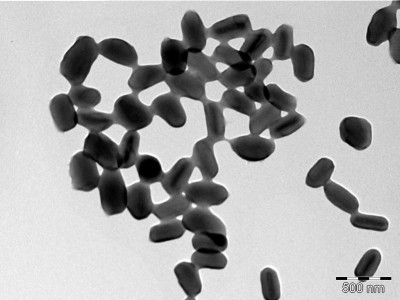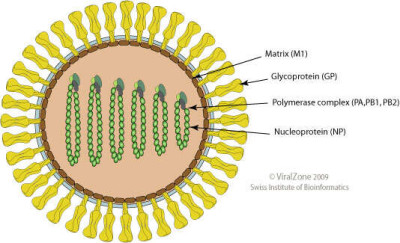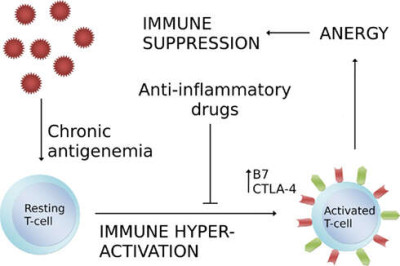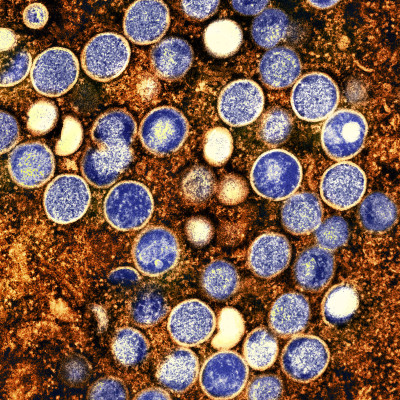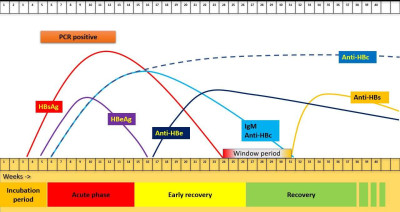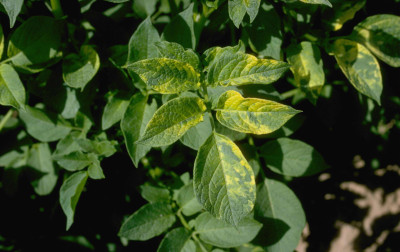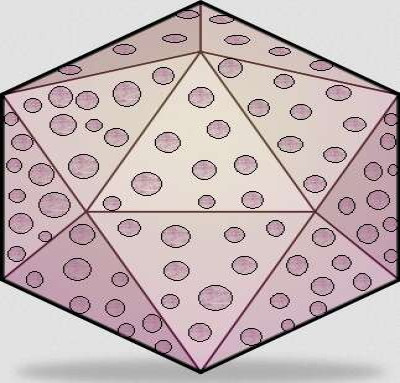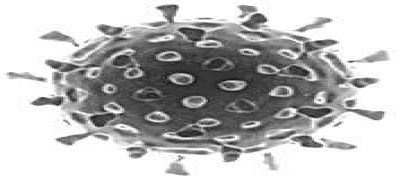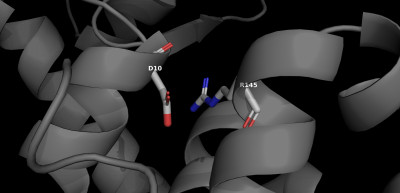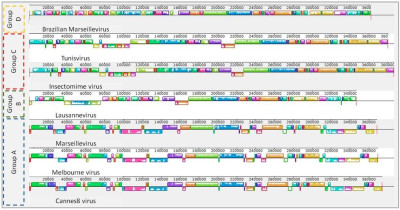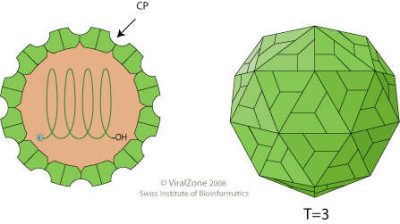Transmission electron micrograph of Phthorimaea operculella granulovirus occlussion bodies purified from Phthorimaea operculella larvae. Imaged with a Libra 120 (Zeiss) transmission electron microscope.
G08j1719, Wikimedia Commons
31 Jan 2024
Schematic drawing of a virion (Genera Thogotovirus and Quaranjavirus, cross section). Enveloped, spherical. The virions are 80-120 nm in diameter
ViralZone, SIB Swiss Institute of Bioinformatics, Wikimedia Commons
23 Feb 2024
Preparation of porcine TAA using the cover-then-cut method. A, The commercially available bovine pericardium patch is sewn onto the ascending aortic walls. B, Following the side clamping, a large hole is made in the aortic wall which connects the patch cavity with the aortic lumen. C, The patch opening is sutured. TAA, thoracic aortic aneurysm.[1]
28 Feb 2024
Chronic antigenemia induces immune hyper-activation that leads to immune suppression. This process may be inhibited by anti-inflammatory or immunosuppressive drugs that reduce T-cell activation. [1]
Wikimedia Commons, ArneLH
02 Apr 2024
Colorized transmission electron micrograph of monkeypox particles (purple) found within an infected cell (brown), cultured in the laboratory. Image captured and color-enhanced at the NIAID Integrated Research Facility (IRF) in Fort Detrick, Maryland.
Wikimedia Commons, NAID
08 Apr 2024
Schematic structure of the genome of retroviruses.
Wikimedia Commons, Gleiberg
18 Apr 2024
Symptoms of Alfalfa Mosaic Virus on potato leaves.
Wikimedia Commons, Howard F. Schwartz. Image Citation: Howard F. Schwartz, Colorado State University, Bugwood.org Licensing
18 Apr 2024
Branch 3 of the RNA virus RNA-dependent RNA polymerases (RdRps): alphavirus superfamily and radiation of related tombusviruses, nodaviruses, and unclassified viruses and flavivirus supergroup. (A) Phylogenetic tree of the virus RdRps showing ICTV-accepted virus taxa and other major groups of viruses. Approximate numbers of distinct virus RdRps present in each branch are shown in parentheses. Symbols to the right of the parentheses summarize the presumed virus host spectrum of a lineage. Green dots represent well-supported (≥0.7) branches, whereas yellow dots correspond to weakly supported branches. Inv., viruses of invertebrates (many found in holobionts, making host assignment uncertain); myco., mycoviruses; uncl., unclassified. (B) Genome maps of a representative set of branch 3 viruses (drawn to scale) showing color-coded major conserved domains. Where a conserved domain comprises only a part of the larger protein, the rest of this protein is shown in light gray. The locations of such domains are approximated (indicated by fuzzy boundaries). C, nucleocapsid protein; CapE, capping enzyme; CP-Spro, capsid protein-serine protease; E, envelope protein; fCP, divergent copies of the capsid protein forming filamentous virions; Hsp70h, Hsp70 homolog; MP, movement protein; NS, nonstructural protein; nsP2 to nsP3, nonstructural proteins; Ppro, papain-like protease; prM, precursor of membrane protein; rCP, capsid protein forming rod-shaped virions; RiS, RNA interference suppressor; S1H, superfamily 1 helicase; S2H, superfamily 2 helicase; SJR2, single jelly-roll capsid proteins of type 2; Spro, serine protease; vOTU, virus OTU-like protease; NS, nonstructural protein. Distinct hues of same color (e.g., green for MPs) are used to indicate the cases when proteins that share analogous function are not homologous. [1]
Yuri I. Wolf, Darius Kazlauskas, Jaime Iranzo, Adriana Lucía-Sanz, Jens H. Kuhn, Mart Krupovic, Valerian V. Dolja, Eugene V. Koonin
18 Apr 2024
Human adenovirus E genome with transcription units shown as green bars, from NCBI entry on human adenovirus E.
Wikimedia Commons, National Library of Medicine
24 Apr 2024
Mosquitoes collected and Zika virus infection of potential vectors, Kédougou, 2011.
Wikimedia Commons, Diawo Diallo , Amadou A. Sall, Cheikh T. Diagne, Oumar Faye, Ousmane Faye, Yamar Ba, Kathryn A. Hanley, Michaela Buenemann, Scott C. Weaver, Diallo et al
10 May 2024
Adenoviruses are prevalent and often lead to mild cold- or flu-like symptoms. They can affect individuals of all ages throughout the year.
Wikimedia Commons
24 Apr 2024
Computer assisted reconstruction of a rotavirus particle (reversed polarity).
Wikimedia Commons
24 Apr 2024
The figure presents an attractive ionic interaction between an arginine (R) and an aspartate (D) residue. Attractive ionic interactions are carried out by a positively charged amino acid and a negatively charged amino acid. Generally, they occur when the distance between the atoms at the side chain termini is less than 6 angstroms. The figure was generated using the PyMOL tool (https://pymol.org/2/).
30 Jan 2024
Representative images of neurospheres infected with ZIKVBR (#10608 twins, n = 2 technical replicates). SB, 400 μm.[1]
Wikimedia Commons
07 Feb 2024
Genome alignment of Brazilian Marseillevirus (BrMV) and other marseillevirus strains. The figure shows genome architecture and synteny.[1]
Fábio P. Dornas, Felipe L. Assis, Sarah Aherfi, Thalita Arantes, Jônatas S. Abrahão, Philippe Colson and Bernard La Scola
29 Feb 2024
Symptom of yellow curl leaf disease in chilli pepper leaves. Klaten, Central Java.
Kembangraps, Wikimedia Commons
01 Mar 2024
Schematic drawing of a virion of the family Closteroviridae, side view. Non-enveloped, flexuous, filamentous,470-1000 nm or more long and 12-13 nm in diameter.
ViralZone, SIB Swiss Institute of Bioinformatics
01 Apr 2024
Schematic drawing of a virion of the family Tymoviridae, cross-section, and external view.
Wikimedia Commons, ViralZone, SIB Swiss Institute of Bioinformatics
02 Apr 2024
 Encyclopedia
Encyclopedia
